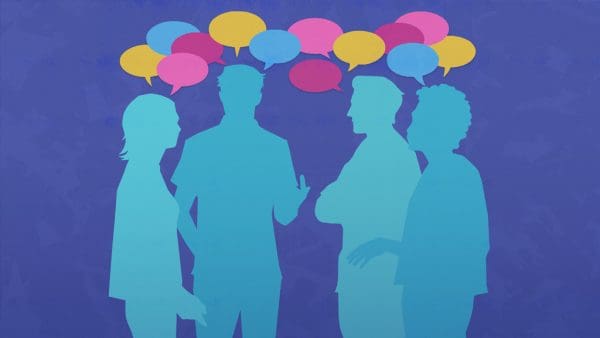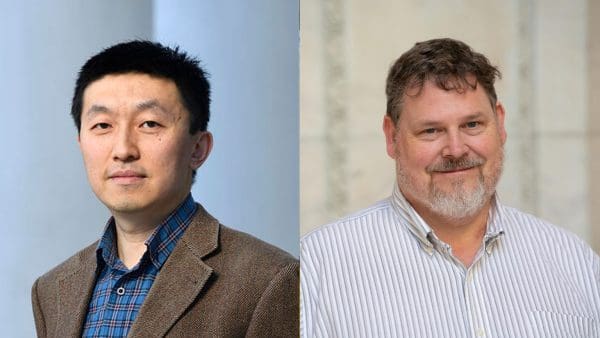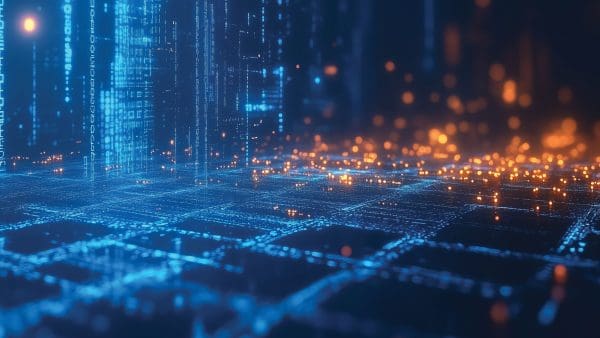Around 1.3 billion years ago, two orbiting black holes smashed into one another and set loose ripples in the fabric of space-time. These gravitational waves raced through the universe at the speed of light. Eventually, those rippling waves would set off a tiny shift in the distance between two pairs of mirrors monitored with laser beams at the heart of the underground Laser Interferometer Gravitational-Wave Observatory (LIGO). This triggered the 2015 announcement of the first observation of Albert Einstein’s predicted gravitational waves.
It was the moment Emanuele Berti, a professor in the William H. Miller III Department of Physics and Astronomy, had been waiting for. Berti had been researching gravitational waves and working to merge that research with modern-day astronomy since his time as a physics student at the Sapienza University of Rome in the late 1990s. He was in a field where scientists had been trying unsuccessfully to detect gravitational waves since the 1950s.
“It was life changing,” he says simply. “It’s the best feeling you could have— you know, my life was not in vain. And now let’s get as much science as we can out of this.”

Like the Plucking of a Guitar
Berti was recently awarded the 2023 American Physical Society’s Richard A. Isaacson Award in Gravitational-Wave Science for his work on black holes and gravitational waves. In addition to pioneering connections between physicists and astronomers who were working on gravitational-wave studies, Berti was one of the first people to explore in depth how to test the theory of general relativity using gravitational waves. He published a foundational paper for using LIGO to analyze black holes via spectroscopy. He also explored how to use gravitational waves to study the history of how stars evolve, form binary systems, turn into compact objects (such as neutron stars or black holes), and eventually merge.
Gravitational waves occur when massive, accelerating bodies—such as black holes or neutron stars—orbit each other. Berti likens the waves they give off to the plucking of a guitar. But instead of hearing the oscillation of a string, you’re experiencing the oscillation of space time.
And just as a musician can tell the shape and material of a drum from the sound of it being played, a scientist can determine the properties of an object from its gravitational waves. All black holes should give off identical gravitational waves because they are simple objects characterized only by their mass and rotation. Because black holes devour light and can only be observed by the behavior of the material swirling around them, gravitational-wave observations allow scientists to discover, for instance, whether a suspected black hole truly is a black hole—or some other type of astronomical object.
“All black holes play the same music, and once we know the mass and the spin, all the tones each black hole plays have to be the same,” Berti says.

All black holes play the same music, and once we know the mass and the spin, all the tones each black hole plays have to be the same.”
—Emanuele Berti
A New Understanding
Knowledge about the role of gravitational waves in physics and astronomy will only increase as the future detectors and observatories come online. Berti is a member of the U.S. NASA study team contributing to the European Space Agency’s upcoming Laser Interferometer Space Antenna. It’s a trio of satellites that will detect gravitational waves from space, and he is working on the science case for the next generation of ground-based detectors.
So far, LIGO evidence points to the black holes observed as being black holes—as Einstein thought. But gravitational waves aren’t just important because they tell us Einstein was right. They’re important because someday they might tell us Einstein was wrong.
Einstein’s theory of general relativity has governed humanity’s understanding of gravity for decades. But mysteries like the presence of invisible dark matter and now dark energy—an unknown force speeding up the expansion of the universe—hint at possible flaws that could eventually pave the way to a new theory. If that happens, gravitational wave studies could be at the forefront.
“The dream would be to break general relativity and maybe find clues to a new theory that will explain all these things,” Berti says.




